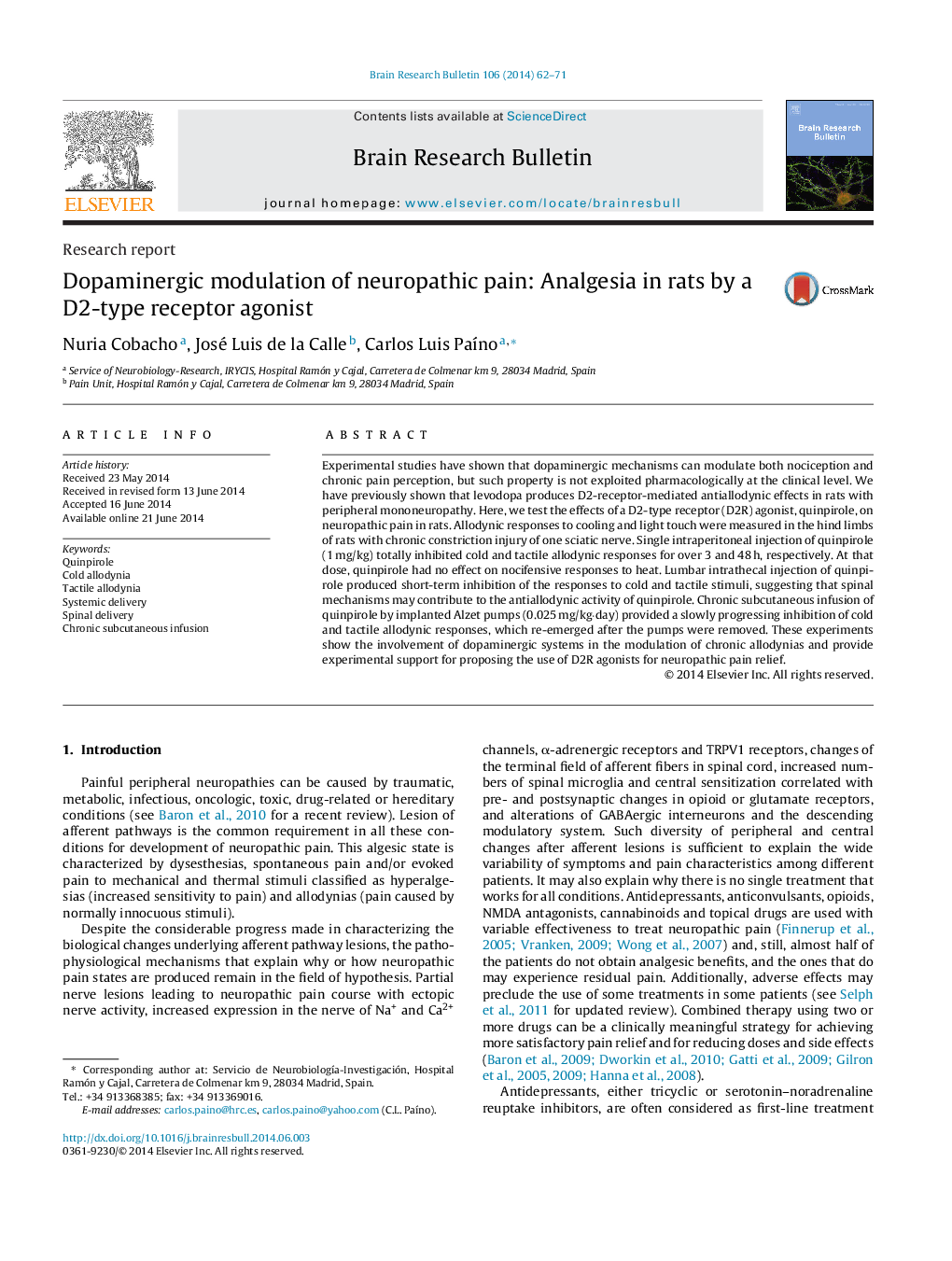| Article ID | Journal | Published Year | Pages | File Type |
|---|---|---|---|---|
| 4318802 | Brain Research Bulletin | 2014 | 10 Pages |
•Quinpirole alleviates cold and tactile allodynia in a rat model of neuropathic pain.•Spinal mechanisms might be involved in the anti-allodynic effect of quinpirole.•However, supraspinal mechanisms probably account for most of the analgesic activity.•Pain relief is gradually achieved when quinpirole in chronically administered.•The study shows the potential of D2R agonists for the management of neuropathic pain.
Experimental studies have shown that dopaminergic mechanisms can modulate both nociception and chronic pain perception, but such property is not exploited pharmacologically at the clinical level. We have previously shown that levodopa produces D2-receptor-mediated antiallodynic effects in rats with peripheral mononeuropathy. Here, we test the effects of a D2-type receptor (D2R) agonist, quinpirole, on neuropathic pain in rats. Allodynic responses to cooling and light touch were measured in the hind limbs of rats with chronic constriction injury of one sciatic nerve. Single intraperitoneal injection of quinpirole (1 mg/kg) totally inhibited cold and tactile allodynic responses for over 3 and 48 h, respectively. At that dose, quinpirole had no effect on nocifensive responses to heat. Lumbar intrathecal injection of quinpirole produced short-term inhibition of the responses to cold and tactile stimuli, suggesting that spinal mechanisms may contribute to the antiallodynic activity of quinpirole. Chronic subcutaneous infusion of quinpirole by implanted Alzet pumps (0.025 mg/kg·day) provided a slowly progressing inhibition of cold and tactile allodynic responses, which re-emerged after the pumps were removed. These experiments show the involvement of dopaminergic systems in the modulation of chronic allodynias and provide experimental support for proposing the use of D2R agonists for neuropathic pain relief.
